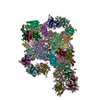+Search query
-Structure paper
| Title | Structure of a diatom photosystem II supercomplex containing a member of Lhcx family and dimeric FCPII. |
|---|---|
| Journal, issue, pages | Sci Adv, Vol. 9, Issue 43, Page eadi8446, Year 2023 |
| Publish date | Oct 27, 2023 |
 Authors Authors | Yue Feng / Zhenhua Li / Xiaoyi Li / Lili Shen / Xueyang Liu / Cuicui Zhou / Jinyang Zhang / Min Sang / Guangye Han / Wenqiang Yang / Tingyun Kuang / Wenda Wang / Jian-Ren Shen /   |
| PubMed Abstract | Diatoms rely on fucoxanthin chlorophyll -binding proteins (FCPs) for their great success in oceans, which have a great diversity in their pigment, protein compositions, and subunit organizations. We ...Diatoms rely on fucoxanthin chlorophyll -binding proteins (FCPs) for their great success in oceans, which have a great diversity in their pigment, protein compositions, and subunit organizations. We report a unique structure of photosystem II (PSII)-FCPII supercomplex from at 2.68-Å resolution by cryo-electron microscopy. FCPIIs within this PSII-FCPII supercomplex exist in dimers and monomers, and a homodimer and a heterodimer were found to bind to a PSII core. The FCPII homodimer is formed by Lhcf7 and associates with PSII through an Lhcx family antenna Lhcx6_1, whereas the heterodimer is formed by Lhcf6 and Lhcf11 and connects to the core together with an Lhcf5 monomer through Lhca2 monomer. An extended pigment network consisting of diatoxanthins, diadinoxanthins, fucoxanthins, and chlorophylls is revealed, which functions in efficient light harvesting, energy transfer, and dissipation. These results provide a structural basis for revealing the energy transfer and dissipation mechanisms and also for the structural diversity of FCP antennas in diatoms. |
 External links External links |  Sci Adv / Sci Adv /  PubMed:37878698 / PubMed:37878698 /  PubMed Central PubMed Central |
| Methods | EM (single particle) |
| Resolution | 2.68 - 3.19 Å |
| Structure data | EMDB-35766, PDB-8iwh: EMDB-35899, PDB-8j0d: |
| Chemicals |  ChemComp-BCR: 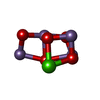 ChemComp-OEX:  ChemComp-CL:  ChemComp-CLA:  ChemComp-PHO: 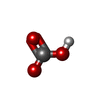 ChemComp-BCT:  ChemComp-LHG:  ChemComp-SQD:  ChemComp-DGD:  ChemComp-LMG:  ChemComp-FE2: 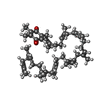 ChemComp-PL9:  ChemComp-HEM: 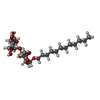 ChemComp-LMU: 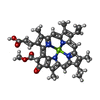 ChemComp-KC1: 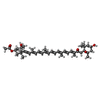 ChemComp-A86:  ChemComp-DD6:  ChemComp-KC2:  ChemComp-ET4: 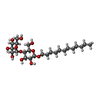 ChemComp-LMT: |
| Source |
|
 Keywords Keywords |  PHOTOSYNTHESIS / PSII supercomplex / LHCX / FCP / PHOTOSYNTHESIS / PSII supercomplex / LHCX / FCP /  heterodimer heterodimer |
 Movie
Movie Controller
Controller Structure viewers
Structure viewers About Yorodumi Papers
About Yorodumi Papers




